Kemo M186 Handleiding
Kemo
Niet gecategoriseerd
M186
Bekijk gratis de handleiding van Kemo M186 (8 pagina’s), behorend tot de categorie Niet gecategoriseerd. Deze gids werd als nuttig beoordeeld door 105 mensen en kreeg gemiddeld 4.8 sterren uit 53 reviews. Heb je een vraag over Kemo M186 of wil je andere gebruikers van dit product iets vragen? Stel een vraag
Pagina 1/8

M186 | Marter verjager voor auto's van 12 V/DC
Verjaagt de marter door een spanning van ca. 200 - 300 V/DC via
hoogspannings platen onder de motorkap, dit schrikdraad effect met
zwakke stroomstoten, die de marter alleen verjaagt maar niet dood. Naast
een soort schrikdraad effect, werkt dit moduul ook met pulserende
ultrasoon geluiden. Door zijn geringe stroomopname (< 0.005 A), schakelt
het moduul automatisch uit als de accu spanning < 11.5 V is. Zodat deze
niet de accu "leeg" maakt als de auto langere tijd stilstaat.
M186 l Odstraszacz kun dla pojazdów z instalacją 12 V/DC
Wypłasza kuny porzez szok elektryczny w komorze silnika
spowodowany dotknięciem pł ą ę ęytek znajduj cych si pod napi ciem ok. 200 -
300 V/DC (słabe impulsy prądowe które nie zabiją lecz tylko wypł ąosz
kuny). Szczególnie niski pobór prądu (< 0,005 A), oraz automatyczne
wyłączenie przy napięciu akumulatora < 11,5 V (nie rozładuje go przy
d uł ższym postoju pojazdu).
М186 | Прибор защищающий автомобиль от куниц
12 Вольт/DC
Отпугивает куницу при помощи высокого постоянного
напряжения (примерно 200 - 300 В) на контактных передвижных
пластинах, прикасаясь к которым куница получает электрошок (слабые
импульсы тока, которые куницу так только отпугивают и не убивают), а
же прибор оснащен мощным ультразвуковым излучателем который
излучает пульсирующий сигнал. Минимальное тока потребление (< 0,005
A), автоматическое отключение если напряжение аккумулятора падает
до уровня 11,5 В (не на допускает полную разрядку аккумулятора у
долгое время припаркованных автомобилей).
D | Diese Marderscheuche kann auch in einem 24 Volt Lkw betrieben werden. Sie müs-
sen dann aber unser Modul M020 vorschalten (Spannungswandler von 24 V auf ca. 13,8
V/DC, max. 1,1 A). Das Modul M020 liegt nicht bei.
GB | This marten repellent may also be operated in a 24-volt lorry. But then you have to
connect our module M020 in series (potential transformer from 24 volt to 13,8 V/DC, max.
1,1 A). The module M020 is not attached to the marten repellent.
CZ | Přístroj na plašení kun může být napájen z 24 Voltovej baterie nákladního automobi-
lu. V takovém případe je nutné predřadit do obvodu mě čni napětí M020 naší výroby
(měnič napětí z 24 V na 13,8 V/DC, Maximální 1,1 A). Modul M020 není součástí dodávky.
F | On peut aussi actionner cet épouvantail contre martres à un camion 24 volts. Mais en
ce cas vous devez intercaler notre module M020 (transformateur de tension de 24 volts à
13,8 V/DC, maximum 1,1 A). L’épouvantail contre martres ne contient pas le module
M020.
I | Questa spaventamartore funziona pure in un camion a 24 volt. In questo caso deve
mettere in oltre nostro modulo M020 (convertitore di voltaggio da 24 V su 13,8 V/DC,
massimo 1,1 A). Il modulo M020 non è accluso.
NL | Deze marter verjager kan ook in 24 V vrachtauto‘s gebruikt worden. U moet dan
ons moduul M020 er voor schakelen (spanning omvormer van 24 V naar 13,8 V/DC,
maximale 1,1 A). Dit moduul M020 is apart te koop, wordt dus niet bij de M115N gele-
verd.
PL | Prezentowany odstraszacz kun może być także stosowany w pojazdach ciężarowych
z instalacją 24 V. W tym celu musicie Państwo zainstalować dodatkowo nasz moduł M020
(Przetwornik 24 / 13,8 V/DC, maksymalnie 1,1 A). Moduł M020 nie znajduje się w
zestawie.
RUS | Прибор для отпугивa ния куниц можно установить и в грузовиках с бортовым
напряжением Вольт 24 . В т н в ц aком случae eобходимо прeдвaритeльно eпь
включить a н ш Модуль М020 (преобразователь постоянного напряжения Вольт из 24 /
DC нa a приблизитe a aльно 13,8 Вольт/DC, м кс. 1,1 A). Модуль М020 к пост вкe прибор
нe приклaдывaeтся.
NL
PL
Kemo Germany P/Module/M186/Beschreibung/
M186-20-020OM/KV060
www.kemo-electronic.de
D | Mit einer Blechschraube werden die Hoch-
spannungsplättchen im Motorraum befestigt. Der
Schraubenkopf darf nicht die Hochspannungs-
Metallfläche auf den Plättchen berühren.
GB | The high-voltage contact plates are faste-
ned in the motor room with a sheet metal screw.
The screw head must not get in contact with the
high-voltage metal surface on the plates.
M186 | Marder-Abwehr für Kraftfahrzeuge 12 V/ DC
Verjagt Marder durch elektrisch auf ca. 200 - 300 V/DC aufgeladene
Hochspannungsplättchen durch Elektroschock im Kfz-Motorraum (nur
schwache Stromstöße, die den Marder nur verjagen und nicht töten) und
durch starke, aggressiv pulsierende Ultraschalltöne. Äußerst geringe Strom-
aufnahme (< 0,005 A) schaltet bei Batteriespannung von < 11,5 V automa-
tisch ab (macht bei länger abgestellten Fahrzeugen nicht die Batterie total
leer).
M186 | Marten Defence for Motor Vehicles 12 V/DC
Chases away martens by means of small high-voltage plates
charged electrically to approx. 200 - 300 V/DC through electric shock in the
engine compartment of the vehicle (only weak current pulses that chase the
marten away, but do not kill it) and through strong, aggressively pulsating
ultrasonic sounds. Extremely low power consumption (< 0.005 A), switches
the battery voltage of < 11.5 V automatically off (does not discharge the
battery completely if vehicles are being parked for quite some time).
M186 | Modul ochrany proti kunám pro nákladní
automobily 12 V/DC
Určený na plašení kun prostřednictvým vysokonapěťovej destičky nabité na
cca 200 - 300 V/DC, která pomocí elektrického šoku v motorovém prostoru
nákladních automobilů (jenom slabý šok, který kuny odežene, ale neusmrtí)
a taky pomocí agresivního pulsujíciho ultrazvuku znemožní kunám pobyt
v automobilu. Modul má obzvláště malou spotřebu proudu (< 0,005 A),
vypíná se au , aby se ptomaticky při napě ů ůtí baterie < 11,5 V (z d vod ři delší
odstávce automobilu nevybila baterie).
M186 | Anti-martre pour véhicules automobiles 12 V/ DC
Chasse les martres par des plaquettes de haute tension chargées
électriquement à env. 200 - 300 V/DC par électrochoc dans le compartiment
pour le moteur (seulement des décharges électriques débiles qui seulement
chasse la martre et ne vont pas la tuer) et par des forts sons ultrasoniques
agressifs et pulsants. Consommation de courant extrêmement basse (<
0,005 A), déconnecte automatiquement à une tension de batterie de < 11,5
V (ne vide pas la batterie dans des voitures qui sont garées plus longtemps).
M186 | Spaventamartora per autoveicolo 12 V/DC
Spaventa la martora con delle bande caricate di elettricità di ca. 200
- 300 V/DC, tramite un shock elettrico nel vano motore del autoveicolo (si
tratta solamente d‘impulsi di corrente lievi che spaventano la martora, non
la uccidono) ed tramite toni ultrasuono forti, aggressivi ed pulsanti. Consu-
mo energetico bassissimo (< 0,005 A), si spegne automaticamente ad una
tensione di batteria < 11,5 V (non scarica la batteria della auto parcheggiate
per lungo tempo).
D
GB
CZ
F
I
1/8
034071
• Hochspannungsplättchen, die im Motorraum des
Autos an bissgefährdete Stellen montiert werden.
• High-voltage contact plates which are installed in the
motor room at bite endangered places.
• Masse (Fahrzeugchassis)
• Mass (car chassis)
• Masse (Fahrzeugchassis), das Kabel mit Öse
• Mass (vehicle chassis), the cable with the eyelet
• Autoakku 12 V/DC
• Car battery 12 V/DC
• Schalter am Armaturenbrett
(Nur auf Wunsch, liegt nicht bei)
• Switch at the instrument panel
(Only when desired, not included)
• Schalter Motorhaube (Nur auf Wunsch, liegt nicht bei)
• Switch engine hood (Only when desired, not included)
RUS
• Klemme 15 / • terminal 15
• Sicherung F 0,5 A / • Fuse F 0,5 A
LED

Bestimmungsgemäße Verwendung:
Vertreiben von Mardern und anderen Wildtieren aus dem
Motorraum von Kraftfahrzeugen und aus Gebäuden mittels Elektro-
schock und aggressiven, pulsierenden Ultraschallfrequenzen.
Aufbauanweisung:
Bitte nehmen Sie während der Montage die Sicherung des Gerätes
aus dem Sicherungshalter. Das Grundgerät wird an einer trockenen
Stelle im Auto montiert, wo es nicht zu heiß wird (bitte nicht in un-
mittelbarer Nähe des Auspuffkrümmers oder anderer besonders hei-
ßer Stellen) und von wo aus die Ultraschalltöne sich gut im Motor-
raum verteilen können. Das Pluskabel mit dem eingebauten Siche-
rungshalter kommt an „+ 12 V“. Das Massekabel kommt an die Fahr-
zeugmasse oder „- 12 V“. Das Kabel zur „Klemme 15“ sollte an die
„Klemme 15“ des Bordnetzes angeschlossen werden. Diese Klemme
ist meistens entweder am Zündschloss oder am Euro-Stecker des
Autoradios. Wenn das Kabel „Klemme 15“ richtig angeschlossen ist,
dann wird die Marderscheuche nur dann eingeschaltet, wenn der
Motor nicht läuft (Auto parkt). Sollten Sie die „Klemme 15“ nicht
finden, dann suchen Sie sich bitte am Zündschloss einen anderen
Kontakt, der bei parkendem Auto ausgeschaltet ist und bei laufen-
dem Motor auf
„PLUS“
geschaltet ist. Bei einigen Autos ist das auch
der Zigarettenanzünder. Durch den Anschluss des Kabels an „Klemme
15“ wird gewährleistet, dass die Marderscheuche nur bei parkendem
Auto eingeschaltet ist (bei fahrendem Auto besteht nicht die Gefahr,
dass der Marder in das Auto kommt).
Einbau in Gebäuden:
Damit der Marder einen elektrischen Schlag bekommt, muss er
gleichzeitig eine von den Hochspannungsplatten und „Masse“ berüh-
ren. Im Auto ist überall der Masseanschluss (Chassis, Motor usw.). In
Gebäuden muss daher unsere Massematte Z115 (liegt nicht bei) am
Einschlupfloch aufgeklebt werden und das Kabel der Massematte mit
der Marderscheuche mit „Masse“ (Minus-Batterie) verbunden werden.
Die selbstklebende Massematte und die Hochspannungsplatten müs-
sen dann am Einschlupfloch so angebracht werden, dass der Marder
mit den Pfoten die metallisierte Massematte berührt und mit der
Schnauze eine von den Hochspannungsplatten. Dann bekommt er
einen elektrischen Schlag.
Hinweis: Wenn Sie das Kabel am Modul zu „Klemme 15“ gar nicht
anschließen, ist die Marderscheuche ständig eingeschaltet.
Ultraschalltöne breiten sich wie Licht aus, hinter Hindernissen gibt es
„Schatten“ (keine Ultraschalltöne). Der Lautsprecher im Gerät sollte
deshalb auf die bissgefährdeten Stellen strahlen (innerhalb des Ab-
strahlkegels von ca. 150 Grad).
Das Hochspannungskabel wird so im Motorraum verlegt, dass die
Kontaktplatten an den bissgefährdeten Stellen montiert werden kön-
nen. Das Hochspannungskabel sollte nicht direkt an sehr heißen
Motorteilen (z.B. Auspuffkrümmer) vorbeigeführt werden (die Kabel-
isolierung könnte schmelzen).
Die Hochspannungsplatten werden entweder mit einer Schraube im
Motorraum des Autos befestigt oder mit Kabelbindern an den Kabel-
bäumen oder Schläuchen des Autos.
Mit einer Blechschraube werden die Hochspannungsplättchen im
Motorraum befestigt. Der Schraubenkopf darf nicht die Hochspan-
nungs-Metallfläche auf den Plättchen berühren.
Wichtig: Die Hochspannungskontaktplatten müssen so montiert
werden, dass die blanken Kontaktplatten > 10 mm von anderen
spannungsführenden Kontakten im Auto entfernt sind. Außerdem
sollte die blanke Kontaktfläche der Kontaktplatten auch andere Auto-
teile nicht berühren (Kurzschlussgefahr). Begründung: Aus Gründen
der Abschirmung werden in Autos auch häufig Kunststoffe (z.B.
Schläuche) verwendet, die aus einem elektrisch leitenden Kunststoff
bestehen. Diese Kunststoffe würden dann die Hochspannung der
Kontaktplatten gegen Masse kurzschließen. Wenn die Kontaktplätt-
chen mit einer Metallschraube befestigt werden, bitte darauf achten,
dass der Schraubenkopf nicht die Hochspannungs-Metallfläche auf
den Kontaktplatten berührt (Kurzschlussgefahr).
Es ist auch wichtig, dass die Kontaktplatten nicht nass werden dür-
fen. Ein Wasserfilm zwischen Fahrzeugmasse und den Kontaktplatten
führt ebenfalls zu einem Kurzschluss.
Bitte kleben Sie den beigefügten gelben Warnaufkleber „Achtung
Hochspannung“ an einer gut sichtbaren Stelle in der Nähe der Hoch-
spannungsplatten (z.B. auf dem Luftfilter).
Inbetriebnahme:
Die Sicherung, die vor der Montage aus dem Sicherungshalter ge-
nommen wurde, wird wieder eingebaut. Wenn alles richtig ange-
schlossen wurde und sich das Fahrzeug in Parkstellung befindet, baut
sich die Hochspannung an den Kontaktplatten auf und die kleine
Leuchtdiode am Modul fängt an zu blinken (ca. alle 5 - 12 Sek.). Bei
der ersten Inbetriebnahme kann das bis zu 5 Minuten dauern, bis
nach dem Einschalten die LED blinkt.
Kemo Germany P/Module/M186/Beschreibung/
M186-20-020OM/KV060
D
2/8
Checkliste für Fehlersuche:
1) Nachmessen: liegt die Betriebsspannung 12 V (Gleichspannung,
Autobatterie) zwischen den Anschlüssen + 12 V und Masse (- 12 V)?
2) Nachmessen: liegt an dem Kabel zu „Klemme 15“ entweder keine Span-
nung gegen Masse oder eine Verbindung nach Masse (Minus)? Das Gerät
funktioniert nicht, wenn am Kabel zu „Klemme 15“ eine Plusspannung (gegen
Fahrzeugmasse gemessen) liegt.
3) Wenn die LED auch nach 5 Minuten noch nicht blinkt obwohl die Betrieb-
spannung anliegt und das Kabel zu Klemme 15 kein Positives (+) Signal be-
kommt, kann ein Kurzschluss bei den Hochspannungsplatten vorliegen. Eine
oder mehrere Platten kommen mit der Metallfläche mit Fahrzeug „Masse“ in
Berührung und die Hochspannung fließt ab (Kurzschluss). Das kann auch
passieren, wenn sich ein Wasserfilm zwischen der Metallfläche auf den Hoch-
spannungsplatten und dem Fahrzeug-Chassis befindet.
4) Die Kontaktplatten müssen frei montiert sein und dürfen keine Verbindung
zu anderen Fahrzeugteilen haben (Kurzschlussgefahr).
Gefahrenhinweis bei Wartungsarbeiten:
Nach dem Abschalten des Gerätes kann die Hochspannung noch max. 3 Min.
an den Kontaktplatten vorhanden sein. Diese Zeit braucht der eingebaute
Ladekondensator für die Entladung. Bitte warten Sie vor den Wartungsarbei-
ten diese Zeit nach dem Abschalten (Sicherung entfernen).
Wenn Sie nicht warten wollen, dann können Sie nach dem Abschalten über
eine kurzzeitige Kabelverbindung (ca. 1 - 3 Sek.) zwischen einer der Hoch-
spannungsplatten und Fahrzeug-Masse einen Kurzschluss machen, der den
Hochspannungs-Ladekondensator sofort entlädt und die Platten spannungs-
frei macht.
Die Hochspannung ist für den Menschen nicht gefährlich (es fließt nur ein
sehr geringer Strom). Wenn man aber sehr schreckhaft ist oder schockge-
fährdet „krank“ ist, dann stellt der „Schreck“ den man bekommt, schon eine
Gefahr dar.
Allgemeiner Hinweis:
Bitte säubern Sie vor dem Einbau der Marderscheuche gründlich den Motor-
raum Ihres Fahrzeugs und auch das Pflaster, auf dem Ihr Auto regelmäßig
steht (z.B. Carport). Marder kennzeichnen ihr Revier mit Duftmarken und
können sehr aggressiv werden, wenn sie die Duftmarken eines anderen Mar-
ders in ihrem Revier riechen.
Unsere Marderscheuchen mit Hochspannungs-Kontaktplatten und aggressi-
ven Ultraschalltönen sind äußerst wirkungsvoll in der Abwehr von Mardern.
Trotzdem übernehmen wir keine Garantie dafür, dass in 100% aller Fälle der
Marder auch wirklich vertrieben wird!
Technische Daten:
Betriebsspannung: 12 - 15 V/DC (Autobatterie) | Stromaufnahme
durchschnittlich: < 5 mA | Abschaltautomatik: wenn die Batteriespan-
nung < 11,5 V (± 5%) sinkt | Ausgangsspannung: ca. 200 - 300 V/DC |
Ultraschallfrequenz: ca. 22 kHz ± 10% | Schalldruck: max. ca. 100 dB
± 15% | Abstrahlwinkel Ultraschall: ca. 150 Grad | Lautsprecher:
Keramik-Spezial-Piezolautsprecher mit Alu-Kalottenmembran | Temperatur-
bereich: ca. – 40 ... + 80 Grad C | Funktionsanzeige: blinkende LED (ca.
alle 5 - 12 Sek.) | Kabellänge Hochspannungskabel: 2 x ca. 1,9 m (±
10%) | Sicherung im Sicherungshalter: 500 mA | Hochspannungs-
kontaktplatten: 6 Stück, je ca. 40 x 40 x 1,5 mm | Maße Grundgerät:
ca. 125 x 70 x 31 mm (H x B x T, ohne Kabeleinführung). Für Fahrzeuge mit
CAN.-Bus geeignet.
Kabel für Klemme 15: Wenn dieses Kabel mit
„Plus“
verbunden ist, schal-
tet die Marderscheuche ab. Wenn es mit
„Minus“
verbunden ist oder kein
Signal bekommt, schaltet die Marderscheuche ein.
Wichtiger Hinweis:
Alle Geräte werden während und am Ende der Produktion sorgfältig geprüft.
Bitte wiederholen Sie diese Prüfung vor dem Einbau: Verbinden Sie das Mas-
sekabel mit dem Minuspol der Autobatterie und das Pluskabel mit der einge-
bauten Sicherung mit dem Pluspol der Autobatterie. Das „Klemme 15-Kabel“
wird nicht angeschlossen. Die Hochspannungsplatten sollten auf einer isolie-
renden Unterlage liegen (Pappe, Holz). Nach spätestens 5 Minuten sollte die
im Modul eingebaute Leuchtdiode im Abstand von 5 - 12 Sekunden kurz
aufblinken. Dann ist die Marderscheuche in Ordnung und kann eingebaut
werden. Achtung! Nach dem Abschalten können die Hochspannungsplatten
noch bis zu max. 3 Minuten aufgeladen bleiben. Vor dem Einbau bitte erst
entladen (siehe Betriebsanleitung bei „Wartungsarbeiten“). Beim Prüfen bitte
darauf achten, dass die Hochspannungsplatten nicht berührt werden! Wenn
das Gerät trotz positivem Test vor dem Einbau nicht funktioniert, liegt ein-
deutig ein Montagefehler vor (siehe Einbauanleitung).
Wir leisten Gewährleistung auf das Gerät nach dem Gesetz, keine Übernahme
von Montage– und Demontagekosten.
Entsorgung:
Wenn das Gerät entsorgt werden soll, dann dürfen diese nicht in den Haus-
müll geworfen werden. Diese müssen dann an Sammelstellen wo auch Fern-
sehgeräte, Computer usw. abgegeben werden, entsorgt werden (bitte erkun-
digen Sie sich in Ihrem Gemeindebüro oder in der Stadtverwaltung nach
dessen Elektronik-Müll-Sammelstellen).
D
http://www.kemo-electronic.de

Use as directed:
To chase away martens and other wild animals from the
engine compartment of vehicles and buildings, by means of electric
shock and aggressive and pulsating ultrasonic frequencies.
Assembly instructions:
Please take the fuse of the device out of the fuse holder during
assembly. The basic instrument has to be mounted at a dry spot in the
car where it will not get too hot (not directly near to the exhaust
manifold or other especially hot places) and from where the ultrasonic
sounds may spread well in the engine compartment. The positive cable
with built-in fuse holder has to be connected to "+ 12 V". The earth
cable is to be connected with the vehicle earth or "- 12 V". The cable
towards “terminal 15” should be connected to “terminal 15” of the
electrical system. This terminal can usually either be found at the
ignition lock or at the Euro plug of the car radio. If the cable "terminal
15" is properly connected, the marten defence is only switched on if the
motor is not running (the car is being parked). If you cannot find
“terminal 15”, please choose another contact at the ignition lock which
is switched off when the car is being parked, and is switched to
„positive“
when the motor is running. At some cars it can be also the
cigarette lighter. The connection of the cable to “terminal 15” ensures
that the marten defence is only switched on when the car is being
parked (there is no risk that the marten will get into the car when the
car is running).
Installation into buildings:
In order for the marten to get an electric shock, he has to touch one of
the high-voltage plates and “earth” at the same time. In the car the
connection to earth is everywhere (chassis, motor, etc.). Therefore, in
buildings it is necessary to affix our earth mat Z115 (not enclosed) at
the entry hole and to connect the cable of the earth mat with the
marten defence at “earth” (negative-battery). Then the self-adhesive
earth mat and the high-voltage plates have to be fixed at the entry hole
in such a manner that the marten touches the metallized earth mat with
the paws and one of the high-voltage plates with the mouth. The
marten then gets an electric shock.
Note: If you do not connect the cable at the module "to terminal 15" at
all, the marten defence is switched on constantly.
Ultrasonic sounds spread as light, there are „shadows“ behind obstacles
(no ultrasonic sounds). That’s why the loudspeaker in the device should
radiate to the spots which are at risk of being bitten (within the cone of
radiation of approx. 150 degrees).
The high-voltage cable has to be laid in the engine compartment in such
a manner that the contact plates can be mounted at spots which are at
risk of being bitten. The high-voltage cable should not directly run along
very hot parts of the motor (e.g. exhaust manifold) (the cable insulation
might melt).
The high-voltage plates are either fixed with a screw in the engine
compartment of the car or with binders at the cable harnesses or tubes
of the car.
The high-voltage contact plates are fastened in the motor room with a
sheet metal screw. The screw head must not get in contact with the
high-voltage metal surface on the plates.
Important: The high-voltage contact plates have to be mounted in
such a manner that the bare contact plates are > 10 mm away from
other alive contacts in the car. Furthermore, the bare contact surface of
the contact plates should neither touch any other parts of the car (risk
of short circuits). Explanation: Plastics (e.g. tubes) consisting of an
electrically conductive plastic are often used in cars for shielding
reasons. These plastics would then short-circuit the high-voltage of the
contact plates against earth. When fixing the small contact plates with a
metal screw, please make sure that the screw head does not touch the
high-voltage metallic surface on the contact plates (risk of short circuit).
It is also important that the contact plates will not get wet. A water film
between the vehicle earth and contact plates will also cause a short-
circuit.
Please stick the enclosed yellow warning sticker “Warning! High-
Voltage!” in a well visible place close to the high-voltage plates (e.g. on
the air filter).
Setting into operation:
The fuse that was removed from the fuse holder before assembly is
mounted again. If everything has been properly connected and the
vehicle is in parking position, the high-voltage at the contact plates
builds up and the small light-emitting diode at the module starts flashing
(approx. every 5 - 12 sec.). When setting into operation for the first
time, it may take up to 5 minutes until the LED starts flashing after
switching on.
GB Check list for trouble shooting:
1) Measuring again: is the operating voltage 12 V (DC voltage,
car battery) between the connections + 12 V and earth (- 12 V)?
2) Measuring again: isn’t there either any voltage against earth or is
there a connection to earth (negative) at the cable to “terminal 15”? The
device will not work if there is a positive voltage (measured against
vehicle earth) at the cable to “terminal 15”.
3) If the LED still does not flash after 5 minutes although the operating
voltage is fed and the cable towards terminal 15 does not receive any
positive (+) signal, there may be a short-circuit at the high-voltage
plates. One or several plates come into contact with the metal surface
with vehicle „earth“ and the high-voltage discharges (short-circuit). This
may also happen if there is a water film between the metal surface on
the high-voltage plates and the vehicle chassis.
4) The contact plates must be mounted freely and may not have any
connection with other parts of the vehicle (risk of short circuits).
Warning concerning maintenance work:
After disconnecting the device, the high-voltage may still be present at
the contact plates for max. 3 min. The built-in charging capacitor needs
this time to discharge. Before carrying out any maintenance work,
please wait for this time after disconnecting (remove the fuse).
If you don’t want to wait, you may induce a short circuit after
disconnecting through a short term cable coupling (approx. 1 - 3 sec.)
between one of the high-voltage plates and the vehicle earth which
discharges the high-voltage charging capacitor immediately and makes
the plates voltage-free.
The high-voltage is not dangerous to men (merely a very weak current
flows). If, however, one is very jumpy or particularly at risk of going into
shock, there is a certain risk.
General information:
Before installing the marten defence, please clean the engine
compartment of your vehicle as well as the paving where you park your
car regularly (e.g. carport) thoroughly. Martens mark their territory with
scent marks and may get very aggressive if they smell scent marks from
another marten in their territory.
Our marten defences with high-voltage contact plates and aggressive
ultrasonic sounds are very effective for beating back martens.
Nevertheless, we do not guarantee that the martens will actually be
chased away in 100% of all cases!
Technical data:
Operating voltage: 12 - 15 V/DC (car battery) | Average power
consumption: < 5 mA | Automatic shutoff: if the battery voltage
decreases to < 11,5 V (± 5%) | Output voltage: approx. 200 - 300 V/
DC | Ultrasonic frequency: approx. 22 kHz ± 10% | Acoustic
pressure: max. approx. 100 dB ± 15% | Angle of radiation
ultrasonics: approx. 150 degree | Loudspeaker: special ceramic
piezoelectric loudspeaker with spherical membrane of aluminium |
Temperature range: approx. - 40 ... + 80 degree C | Functional
display: flashing LED (approx. every 5 - 12 sec.) | Cable length
high-voltage cable: 2 x approx. 1,9 m (± 10%) | Fuse in the fuse
holder: 500 mA | High-voltage contact plates: 6 pieces, approx. 40
x 40 x 1,5 mm each | Dimensions basic instrument: approx. 125 x
70 x 31 mm (H x W x D, without cable entry point). Suitable for vehicles
with Can Bus.
Cable for terminal 15: If this cable is connected with
“positive“
, the
marten defence disconnects. The marten defence switches on if it is
connected with
“negative”
or does not receive any signal.
Important information:
All devices are tested thoroughly during and at the end of production.
Please repeat this test before installation: Connect the earth cable with
the negative pole of the car battery and the positive cable with the built-
in fuse with the positive pole of the car battery. The „terminal 15-cable“
is not connected. The high-voltage plates should lie on an insulated base
(cardboard, wood). After 5 minutes at the latest the light-emitting diode
mounted in the module should flash shortly at an interval of 5 - 12
seconds. Then the marten defence is all right and can be installed.
Attention! After disconnection the high-voltage plates may still be
charged up to max. 3 minutes. Please discharge first before installation
(see operating instructions under „maintenance work“). When testing
please see to it that the high-voltage plates will not be touched! If the
device does not work despite a positive test before installation, this is
clearly due to an installation error (see assembly instructions).
Our guarantee on this device is according to law. We do not assume any
costs for assembly and disassembly.
Disposal: This device may not be disposed of with the household
waste. It has to be delivered to collecting points where television sets,
computers, etc. are collected and disposed of (please ask your local
authority or municipal authorities for these collecting points for
electronic waste).
GB
3/8
Kemo Germany P/Module/M186/Beschreibung/
M186-20-020OM/KV060
http://www.kemo-electronic.de
Product specificaties
| Merk: | Kemo |
| Categorie: | Niet gecategoriseerd |
| Model: | M186 |
Heb je hulp nodig?
Als je hulp nodig hebt met Kemo M186 stel dan hieronder een vraag en andere gebruikers zullen je antwoorden
Handleiding Niet gecategoriseerd Kemo

18 Mei 2024

17 Mei 2024

27 November 2023

27 November 2023

27 November 2023

27 Juli 2023

27 Juli 2023

20 Juni 2023

19 Juni 2023

14 Juni 2023
Handleiding Niet gecategoriseerd
- Maxxter
- Reebok
- Danfoss
- YISHU
- Quik Lok
- TeachLogic
- Praktica
- Bowflex
- Manfrotto
- ZZ-2
- Simmons
- Monogram
- Cressi
- Apc
- Wabeco
Nieuwste handleidingen voor Niet gecategoriseerd
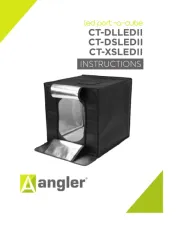
18 September 2025
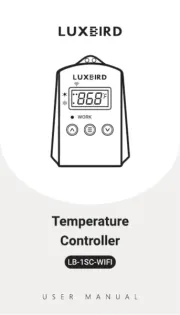
18 September 2025
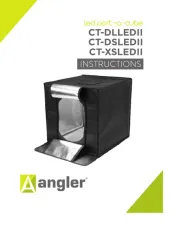
18 September 2025
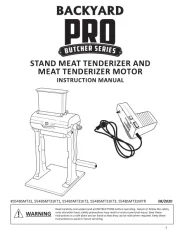
18 September 2025
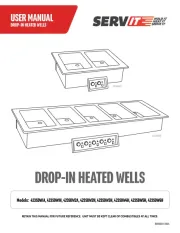
18 September 2025
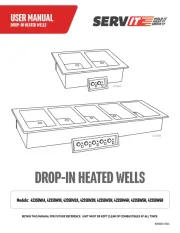
18 September 2025
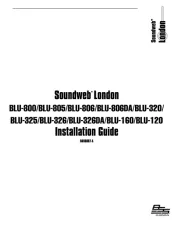
18 September 2025
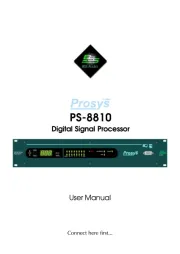
18 September 2025

18 September 2025
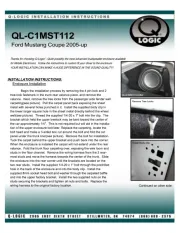
18 September 2025